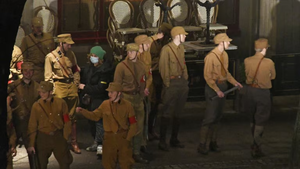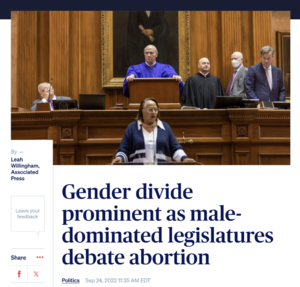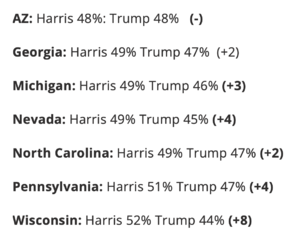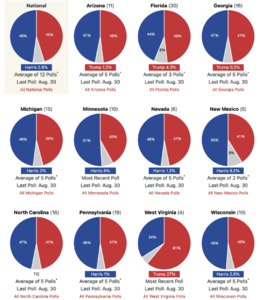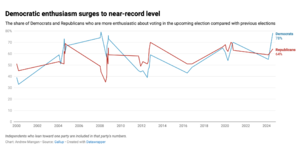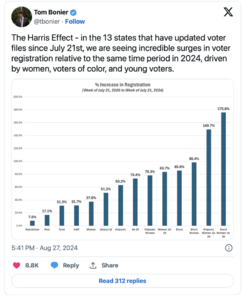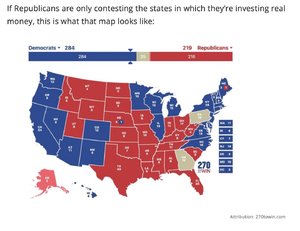Stusset på den første, og så kom den en gang til, og på den tredje kjente jeg igjen mønsteret. Tar aldri lagt merke til en slik tegnsetting før, og mange takk for nerding,
@Hardingfele.
Det blir veldig presist. Jeg har lest The New Yorker "i alle år" og har vennet meg til det.
Grunnleggeren av The New Yorker insisterte på at det som stod i bladet skulle faktasjekkes og at man skulle kunne dokumentere alt. De går ekstremt langt og bladets fact-checkers er hinsides grundige. Her skriver John McPhee. Jeg måtte fjerne noen formateringer og dermed ble det litt rare linjeavstander. En kinesisk journalist ble utsatt for faktasjekkerne da de skulle følge opp en artikkel om Kina som en av bladets skribenter hadde levert. En halvtimes telefonsamtale fra avdelingen for å klargjøre ting som man i Kina ikke ville brydd seg med.
Her er en artikkel fra John McPhee om prosessen:
Checkpoints
By
John McPheeFebruary 1, 2009
Sara Lippincott, who now lives in Pasadena, having retired as an editor at this magazine in the early nineteen-nineties, worked in
The New Yorker’s fact-checking department from 1966 until 1982. She had a passion for science, and when pieces of writing about science came into the magazine they were generally copied to her desk. In 1973, a long piece of mine called “The Curve of Binding Energy” received her full-time attention for three or four weeks and needed every minute of it. Explaining her work to an audience at a journalism school, Sara once said, “Each word in the piece that has even a shred of fact clinging to it is scrutinized, and, if passed, given the checker’s imprimatur, which consists of a tiny pencil tick.” From that sixty-thousand-word piece of mine—which was about weapons-grade nuclear material in private industry and what terrorists might or might not do with it—one paragraph in particular stands out in memory for the degree of difficulty it presented to her and the effort she made to keep it or kill it.
It was a story told to me by John A. Wheeler, who, during the Second World War, had been the leading physicist in residence at the Hanford Engineer Works, on the Columbia River in south-central Washington, where he attended the startup and plutonium production of the first large-scale nuclear reactor in the world. In 1939, with the Danish physicist Niels Bohr, Wheeler had identified the atomic nuclei most prone to fission and the consequent release of binding energy. In 1943-44, as the first reactor was being designed for Hanford, Wheeler had insisted on expanding its fundamental cross-section from a circle to a square, so that five hundred extra fuel rods could be inserted, if necessary, into the graphite matrix of the reactor—a colossally expensive alteration made because Wheeler had come to suspect that something like xenon poisoning might affect the reaction. It did, and the increased neutron flux from the additional fuel rods took care of the problem. In Professor Wheeler’s office at Princeton University in 1973, I had scribbled notes for about an hour when he said, as a kind of afterthought, that an odd thing happened at Hanford in the winter of 1944-45, or, perhaps, did not happen. He had not observed it himself. He had never seen it mentioned in print. Hanford was a vast, spread-out place in the bunchgrass country, full of rumors, secrecy, and apocryphal stories. If I were to use this story, I would have to authenticate it on my own because he had no idea if it was true. He said he had heard that a Japanese incendiary balloon—one of the weapon balloons that were released in Japan and carried by the jet stream across the Pacific Ocean—had landed on the reactor that was making the plutonium that destroyed Nagasaki, and had shut the reactor down.
The Japanese called the balloons
fusen bakudan. Thirty-three feet in diameter, they were made of paper and were equipped with incendiary devices or high explosives. In less than a year, nine thousand were launched from a beach on Honshu. They killed six people in Oregon, five of them children, and they started forest fires, and they landed from Alaska to Mexico and as far east as fifteen miles from the center of Detroit. Completing the original manuscript of “The Curve of Binding Energy,” which was otherwise not about Hanford, I wrote half a dozen sentences on the balloon that shut down the reactor, and I turned the piece in. If Wheeler’s story was true, it would make it into print. If unverifiable, it would be deleted. I hoped it was true. The rest was up to Sara.
Her telephone calls ricocheted all over the United States: from Brookhaven to Bethesda, from La Jolla to Los Alamos, not to mention Hanford and various targets in the District of Columbia. Interspersed with everything else she had to do in order to arrive—one word at a time—at those countless ticks, she went on making calls about the incendiary balloon for days on end. At last came an apparent breakthrough. Someone told her that he could not authenticate the story, but he knew absolutely who could.
“Oh, yes? Who?”
“John Wheeler.”
I told Sara to abandon the anecdote. The tale was almost surely someone’s invention; we should just delete it; she had done enough. She went on making phone calls.
If Sara was looking for information in the dark, the darkness was the long shadow of the wartime secrecy, when forty-five thousand people, from construction workers to theoreticians, lived in Hanford, Pasco, Kennewick, and, especially, Richland, a village of two hundred that the Army bought in 1943 and soon enhanced with more than four thousand houses. The large population notwithstanding, Hanford Engineer Works, of the Manhattan Project, was so secret that the Joint Chiefs of Staff did not know about it. Harry Truman learned of it only after the death of Franklin Roosevelt, in April, 1945. People at Hanford lived among posters that said “Don’t Be Caught with Your Mouth Open.” They set their urine in bottles on their doorsteps at night so it could be tested for contained plutonium. The people of Richland made babies at a higher rate than any other place in the nation. There was little else to make except plutonium. To put an ear to the ground, so to speak, and listen for spies, a resident F.B.I. agent went to brothels in Pasco and Kennewick, taking with him his beautiful wife. She sat in the car while he did his counter-espionage inside. To profile people who might be easy targets for spies, F.B.I. agents went from house to house trying to learn who the heavier drinkers were and who was climbing into what neighbor’s bed. Hanford Engineer Works had its own justices of the peace, its own jail. Taverns were erected for the nighttime bibulation of construction workers, whose tendency to brawl was so intense that Wheeler later recalled “those beer joints with windows close to ground level so that tear gas could be squirted in.”
Key personnel were known by false names. Enrico Fermi was Mr. Farmer. Eugene Wigner was Mr. Winger. Arthur Compton was Mr. Comas. People referred to Wheeler as Johnny the Genie. Radiation exposure was called “shine,” and the word for radiation itself was “activity.” One technician who slipped up and used the “R” word was called to an office and chewed. With extremely few exceptions, the personnel had no idea what they were doing, but they did what they were told. (“We all washed our hands so many times a day I thought I was Lady Macbeth.”) The Manhattan Project, at Hanford as elsewhere, required the “ ‘immediate high amputation’ of any human limb with a cut contaminated by plutonium.” There could have been a safety billboard: 29
DAYS WITHOUT A HUMERUS LOST. There were black-widow spiders in people’s houses. One woman called the government hospital and asked what she should do if a black widow bit her three-year-old daughter. Hospital: “If she goes into convulsions, bring her in. . . .” On and off the site, rumors were ceaseless about Hanford’s contribution to the war effort: variously, it was a P.O.W. camp, a processor of solid rocket fuel, a biological kitchen preparing things for germ warfare, a nylon production line (DuPont was the prime industrial contractor). Asked what was really going on, the Army’s knowledgeable liaison, Captain Frank Valente, said, “We are dehydrating the Columbia River for shipment overseas.”
And now, in late 1973 at
The New Yorker, the moment was rapidly approaching when “The Curve of Binding Energy” would go to press and alterations would no longer be possible. Once again, I thanked Sara and told her to remove the story of the Japanese balloon. O.K., she said, but maybe if she found a free moment that final afternoon she would make another call or two. Or three. And she did, and she turned up someone in Delaware who told her that he could not authenticate the story, but he knew absolutely who could.
Oh? Who would that be? John Wheeler?
The site manager, B Reactor. He would surely have known if an incendiary balloon had lit up his building.
Where is he now?
Retired in Florida.
Sara looked up his telephone number. The checking department in those days was equipped floor to ceiling with telephone books. She called. He was not home. He had gone shopping.
Where?
The mall.
Sara called the police. She told them the situation, asked for help, and gave them her telephone number.
Minutes went by but not hours. The piece had not yet gone to press when the site manager called. He was in a telephone booth, the ancestral cell. Sara explained her purpose and read to him a passage that ended as follows:
The fire balloons were so successful, in fact, that papers were asked not to print news of them, because the United States did not want to encourage the Japanese to release more. The balloon that reached Hanford crossed not only the Pacific but also the Olympic Mountains and the alpine glaciers of the Cascade Range. It now landed on the building containing the reactor that was producing the Nagasaki plutonium, and shut the reactor down.
The manager said to Sara, “How did you know that?”
He went on to say that the balloon had not actually landed on the building but on a high-tension line carrying power to the reactor. There was just enough time to make the fix.
A-Rod makes an occasional error, and so does
The New Yorker. Rarest of all is a fact that was not erroneous in the original manuscript but became an error in the checking process. When this happens, it can fairly be called an event, like the day the soap sank at Procter & Gamble. This has happened to me only once—and nearly thirty years ago. If blame is to be assigned, heaven forbid, I am not the assignee, and neither is Sara, who checked the piece. Called “Basin and Range,” it was the first in a series of long pieces on geology that appeared from time to time across a dozen years. It had extensive introductory passages on themes like plate tectonics and geologic time. In the original manuscript, one paragraph said:
It is the plates that move. They all move. They move in varying directions and at different speeds. The Adriatic Plate is moving north. The African Plate once came up behind it and drove it into Europe—drove Italy like a nail into Europe—and thus created the Alps.
C Issue, B Issue, A Issue, the schedule drifted, as ever, toward the brink of time, the final and irreversible closing. In one’s head as in the surrounding building, things speed up in the ultimate hours and can become, to say the least, frenetic. Joshua Hersh, a modern fact-checker who is characteristically calmer than marble, refers to this zone of time as “the last-minute heebie-jeebies.” As “Basin and Range” came within fifteen minutes of closing, so many rocks were flying around in my head that I would have believed Sara if she had told me that limestone is the pit of a fruit. At one minute to zero, she came to tell me that I was wrong about the Adriatic Plate, that it is not moving north but southwest.
Desperately, I said, “Who told you that?”
She said, “Eldridge Moores.”
World-class plate theorist, author of innumerable scientific papers on the ophiolitic sequence as the signature of global tectonics, president to be of the Geological Society of America, Eldridge Moores was the generous and quixotic geologist who had undertaken to teach me, on field trip after field trip, the geologic history of, among other places, California, Arizona, Greece, and Cyprus. My head spinning, I said to Sara, “If Eldridge Moores says the Adriatic Plate is moving southwest, it’s moving southwest. Please change the sentence.”
In the new
New Yorker on the following Monday, the Adriatic Plate was on its way to Morocco. Leafing through the magazine in an idle moment that week, I called Eldridge and found him in his office at the University of California, Davis. I said, “Eldridge, if the Adriatic Plate is moving southwest, what are the Alps doing there?”
He said, “The Adriatic Plate?”
I said, “The Adriatic Plate.”
I believe I actually heard him slap his forehead. “Oh, no!” he said. “Not the Adriatic Plate! The Aegean Plate. The Aegean Plate is moving southwest.”
The worst checking error is calling people dead who are not dead. In the words of Josh Hersh, “It really annoys them.” Sara remembers a reader in a nursing home who read in
The New Yorker that he was “the late” reader in the nursing home. He wrote demanding a correction.
The New Yorker, in its next issue, of course complied, inadvertently doubling the error, because the reader died over the weekend while the magazine was being printed.
Any error is everlasting. As Sara told the journalism students, once an error gets into print it “will live on and on in libraries carefully catalogued, scrupulously indexed . . . silicon-chipped, deceiving researcher after researcher down through the ages, all of whom will make new errors on the strength of the original errors, and so on and on into an exponential explosion of errata.” With drawn sword, the fact-checker stands at the near end of this bridge. It is, in part, why the job exists and why, in Sara’s words, a publication will believe in “turning a pack of professional skeptics loose on its own galley proofs.” Newspapers do not have discrete fact-checking departments, but many magazines do. When I first worked at
Time—in the year 957, during the reign of Eadwig the All-Fair—
Time’s writers were men, and the researcher/fact-checkers were women. They were expert. When I freelanced a piece to the
Atlantic, I asked who would do the fact-checking and was told, “That’s up to you.” The
Atlantic had a nil budget for fact-checking. A little later, when I sold a piece to
National Geographic it seemed to have more fact-checkers than there are Indians in the Amazon.
Holiday and the
Saturday Evening Post were only a little less assiduous. While
The New Yorker’s fact-checking department had achieved early fame in its field, many other magazines have been just as committed and careful. Twenty-eight years after that first
Atlantic piece, I sold the
Atlantic a second one, and this time experienced a checking process equivalent to
The New Yorker’s.
Book publishers prefer to regard fact-checking as the responsibility of authors, which, contractually, comes down to a simple matter of who doesn’t pay for what. If material that has appeared in a fact-checked magazine reappears in a book, the author is not the only beneficiary of the checker’s work. The book publisher has won a free ticket to factual respectability. Publishers who, for early-marketing purposes, set a text in stone before a magazine’s checking department has been through it get what they deserve. An almost foolproof backup screen to the magazine-to-book progression is the magazine’s vigilant readership. After an error gets into
The New Yorker, heat-seeking missiles rise off the earth and home in on the author, the fact-checker, the editor, and even the shade of the founder. As the checking department summarizes it, “No mistakes go unnoticed by readers.” In the waning days of 2005, Rebecca Curtis’s fine short story “Twenty Grand” appeared in
The New Yorker. Its characters, in 1979, go into a McDonald’s for Chicken McNuggets. McNuggets appeared in
The New Yorker’s Christmas mail. McDonald’s had introduced them in 1983.
On the scattered occasions when such a message has come to me, I have written to the reader a note of thanks (unless the letter is somewhere on the continuum between mean-spirited and nasty, which is rarely the case). “You’re right!” I say. “And I am very grateful to you, because that mistake will not be present when the piece appears in book form.” If, in the reader’s letter, there has been just a tonal hint of a smirk, I cannot help adding, “If a lynx-eyed reader like you has gone through those thousands of words and has found only one mistake, I am quite relieved.”
In the comfortable knowledge that the fact-checking department is going to follow up behind me, I like to guess at certain names and numbers early on, while I change and re-change and listen to sentences, preferring to hear some ballpark figure or approximate date than the dissonant clink of journalistic terms:
WHAT CITY, $000,000, name TK, number TK, Koming. These are forms of promissory note, and a checker is expected to pay it. Koming means what koming sounds like and is sort of kute; TK means “to come.” At least for me, they don’t serve the sound of a drafted sentence as well as flat-out substitutes, pro-tem inventions. In a freight train a mile and a half long, there is a vital tube of air that runs the full length and controls the brakes. In “Coal Train” (2005), I felt a need for analogy and guessed at one:
The releasing of the air brakes began at the two ends, and moved toward the middle. The train’s very long integral air tube was like the air sac of an American eel.
Before long, the checking department was up to its chin in ichthyologists, and I was informed by Josh Hersh that the air sac of an American eel is proportionally a good deal shorter than the air sac in most ordinary fish.
“Who says so?”
“Willy Bemis.”
“Oh.”
Willy Bemis is to the anatomy of fishes what Eldridge Moores is to tectonics. Willy was the central figure in a book of mine that had been published three years before, parts of which appeared in
The New Yorker. He had since left the University of Massachusetts to become director of Shoals Marine Laboratory, the offshore classrooms of Cornell University and the University of New Hampshire. I called him in Ithaca to ask what could be done. Ever accommodating, Willy at first tried to rationalize the eel. Maybe its air sac was up to the job after all. Maybe the analogy would work. I said the eel would never make it through the checking department, or, for that matter, past me. We were close to closing, and right offhand Willy was unable to think of a species with a long enough sac. What to do? What else? He called Harvard. The train’s very long integral air tube was like the air sac of a rope fish.
On the Merrimack River in Merrimack, New Hampshire, is a Budweiser brewery that brewed its first Bud in 1970. In 1839, John and Henry Thoreau passed the site in their homemade skiff on the journey that resulted in Henry’s first book. A run of white water there had been known as Cromwell’s Falls since the seventeenth century, but, Thoreau wrote, “these falls are the Nesenkeag of the Indians,” and he went on to say, “Great Nesenkeag Stream comes in on the right just above.” New Hampshire has a number of place names that end in the letters “k e a g.” The “keag” is pronounced as if the “a” were missing; i.e., “keg.” In 2003, my son-in-law Mark Svenvold and I went through Nesenkeag Falls and Namaskeag Falls and Amoskeag Falls, in an Old Town canoe, tracing the Thoreaus’ upstream journey, and while dragging the canoe up the rapids I found myself wondering how many kegs that Budweiser plant could produce in a day. Back home and writing, I made up a number out of thin air, and it is what Anne Stringfield, checking the facts, saw on her proof:
Just above Cromwell’s Falls on Route 3, very close to but not visible from the river, is a Budweiser brewery that has a production average of thirteen thousand kegs a day.
Never underestimate AnheuserBusch. The average production turned out to be eighteen thousand kegs in a day.
Another fluvial piece—“Tight-Assed River”—was checked by Josh Hersh in 2004. He found this on his proof:
People say, “The Illinois River? What’s that? Never heard of it. Where does it go?” Actually, there are two Illinois Rivers in America, each, evidently, as well known as the other.
One is in Illinois, another is in Arkansas and Oklahoma; and those two are all you will find in Merriam-Webster’s Geographical Dictionary, which is among the checking department’s more revered references. Josh dove into the Web, and came up with a third—an Illinois River in Oregon, which is not well known even in Oregon.
Actually, there are three Illinois Rivers in America, each, evidently, as well known as the others.
(And now, with this piece, in January of 2009, the fact-checking department has found yet another Illinois River—in Colorado. If I were to republish this bit of fluvial information forty-six more times, evidently we would find an Illinois River in every state in the Union.)
That feat, on Josh’s part, was just a stretching exercise before he took on, among other things, a cabin boat that was drifting idly on the eponymous Illinois while a vessel longer than an aircraft carrier bore down upon it sounding five short blasts, the universal statement of immediate danger. The vessel, more than eleven hundred feet long and wired rigid, was made up of fifteen barges pushed by a “towboat.” I was in the pilothouse scribbling notes.
At just about the point where the cabin boat would go into our blind spot—the thousand feet of water that we in the pilothouse can’t see—people appear on the cabin boat’s deck, the boat starts up, and in a manner that seems both haughty and defiant moves slowly and slightly aside. We grind on downriver as the boat moves up to pass us port to port, making its way up the thousand feet of barges to draw even with the pilothouse. Two men and two women are in the cabin boat. The nearest woman—seated left rear in the open part of the cockpit—is wearing a black-and-gold two-piece bathing suit. She has the sort of body you go to see in marble. She has golden hair. Quickly, deftly, she reaches with both hands behind her back and unclasps her top. Setting it on her lap, she swivels ninety degrees to face the towboat square. Shoulders back, cheeks high, she holds her pose without retreat. In her ample presentation there is defiance of gravity. There is no angle of repose. She is a siren, and these are her songs.
So far so checkable. Something like that can be put—in
New Yorker-speak—“on author.” It was my experience, my description, my construction, my erection. No one seemed worried about the color of the bathing suit. I went on, though, to say something close to this:
She is Henry Moore’s “Oval with Points.” Moore said, “Rounded forms convey an idea of fruitfulness, maturity, probably because the earth, women’s breasts, and most fruits are rounded, and these shapes are important because they have this background in our habits of perception. I think the humanist organic element will always be for me of fundamental importance in sculpture.”
And now we were into deep checking. In 1975, I had telephoned Lynn Fraker, who was a docent for the art museum at Princeton, where Moore’s “Oval with Points” is one of a couple of dozen very large and primarily abstract sculptures that stand outdoors around the campus. I wanted to use them as description exercises in a writing class that I was about to teach for the first time. The Henry Moore, eleven feet tall, is shaped like a doughnut, and from each of its interior sides a conical and breastlike bulge extends toward another conical and breastlike bulge, their business ends nearly touching, as if they were on the ceiling of a chapel. It was my opinion that students should be able to do a better description than that. “Doughnut,” for example, was not a word that should be allowed to rise into the company of Henry Moore, and, in every class I have taught since then, I have used the notes from that talk with Lynn Fraker. They include the words of Henry Moore, which she recited from memory. And now in 2004 I had no idea where she read them. She had left Princeton decades before, had remarried, and was unreachable.
The Internet was no help, but Josh, searching through the catalogues of the New York Public Library, learned that collections of Moore’s commentaries on sculptural art were in a midtown branch, across Fifth Avenue from the library’s main building. After an hour or two there, he found an essay by Moore from a 1937 issue of the BBC’s
The Listener. In the next-to-last paragraph were the words that Lynn Fraker had rattled off to me. They needed very little adjustment to be rendered verbatim, as they are above. After which, we were back to “on author”:
She has not moved—this half-naked Maja outnakeding the whole one. Her nipples are a pair of eyes staring the towboat down. For my part, I want to leap off the tow, swim to her, and ask if there is anything I can do to help.
Perhaps I am giving the fact-checkers too much credit. After all, I do what they do before they do. I don’t leave a mountain of work to them, and this is especially true if
The New Yorker has rejected the piece and I am forging ahead to include it in a book, as happened in 2002, when the magazine turned a cold eye—for some inexplicable reason—on twelve thousand words about the American history of a fish. So I checked the virginal parts of the book myself, risking analogy with the attorney who defends himself and has a fool for a client. The task took me three months—trying to retrace the facts in the manuscript by as many alternate routes as I could think of, as fact-checkers routinely do. There were a couple of passages that slowed things down almost to a halt, when, for one reason or another, it took eons on the Internet and more time in libraries to determine what to do or not to do.
Penn’s daughter Margaret fished in the Delaware, and wrote home to a brother asking him to “buy for me a four joynted strong fishing Rod and Real with strong good Lines . . .”
The problem was not with the rod or the real but with William Penn’s offspring. Should there be commas around Margaret or no commas around Margaret? The presence or absence of commas would, in effect, say whether Penn had one daughter or more than one. The commas—there or missing there—were not just commas; they were facts, neither more nor less factual than the kegs of Bud or the color of Santa’s suit. Margaret, one of Penn’s several daughters, went into the book without commas. Moving on, I tried to check this one:
On Wednesday, August 15, 1716, near Cambridge, Massachusetts, Cotton Mather fell out of a canoe while fishing on Spy Pond. After emerging soaked, perplexed, fishless, he said, “My God, help me to understand the meaning of it!” Before long, he was chastising his fellow clerics for wasting God’s time in recreational fishing. Not a lot of warmth there. Better to turn to the clergyman Fluviatulis Piscator, known to his family as Joseph Seccombe, who was twenty-one years old when Cotton Mather died. Beside the Merrimack River, in 1739, Piscator delivered a sermon that was later published as “A Discourse utter’d in Part at Ammauskeeg-Falls, in the Fishing-Season.” There are nine copies in existence. One was sold at auction in 1986 for fourteen thousand dollars. The one I saw was at the Library Company of Philadelphia. Inserted in it was a book dealer’s description that said, “First American book on angling; first American publication on sports of field and stream. Seccombe’s defense of fishing is remarkable for coming so early, in a time when fishing for fun needed defending.”
There was, in all of that, one part of one sentence that proved, in 2002, exceptionally hard to check. It could easily have been rewritten in a different way, but I stubbornly wished to check it. To wit:
Joseph Seccombe, who was twenty-one years old when Cotton Mather died.
In order to tick those exact and un-modified words, you would need to know not only the year in which Mather died and the year in which Seccombe was born but also the month and day for each. When Mather died, on February 13, 1728, Seccombe was either twenty-one or twenty-two. Which? The Internet failed me. Libraries failed me. The complete works of Joseph Seccombe and Fluviatulis Piscator failed me. I called Kingston, New Hampshire, where he had served as minister for more than twenty years. The person I reached generously said she would look through town and church records and call me back, which she did, two or three days later. She was sorry. She had looked long and hard, but in Kingston evidently the exact date of Seccombe’s birth was nowhere to be found. I was about to give up and insert “in his early twenties” when a crimson light bulb lit up in my head. If Joseph Seccombe was a minister in 1737 (the year he arrived in Kingston), he had been educated somewhere, and in those days in advanced education in the Province of Massachusetts Bay there was one game in town. I called Harvard.
By the main switchboard, I was put through to someone who listened to my question and said right back, within a few seconds, “June 14, 1706.”












